Dear Friends
We were hiking high up in the wilds of the remote North Fork of Hat Creek. It was Sam and Jess, the two summer range riders, and I. We were on a quest to inspect some of the farthest reaches of barbed wire boundary fence on our grazing ranges.
It was a beautiful blue sky day in June, and at this altitude, the mountain said ‘springtime’, and the North Fork was still swollen with melting snow. The wildflowers were a blooming and multicolored rock garden display that went on for miles along the wet margins of the creek.
Snowpack was almost gone from the crags that rimmed this alpine valley, although persistent streaks in couloirs or gullies still remained in white as did leeward drifts along the bare granite ridges of Taylor Mountain, above us.
It had been several years since I inspected this section, and I knew it had to be toast–literally speaking, as this whole area was laid waste by a raging 35,000-acre forest fire in 2018.
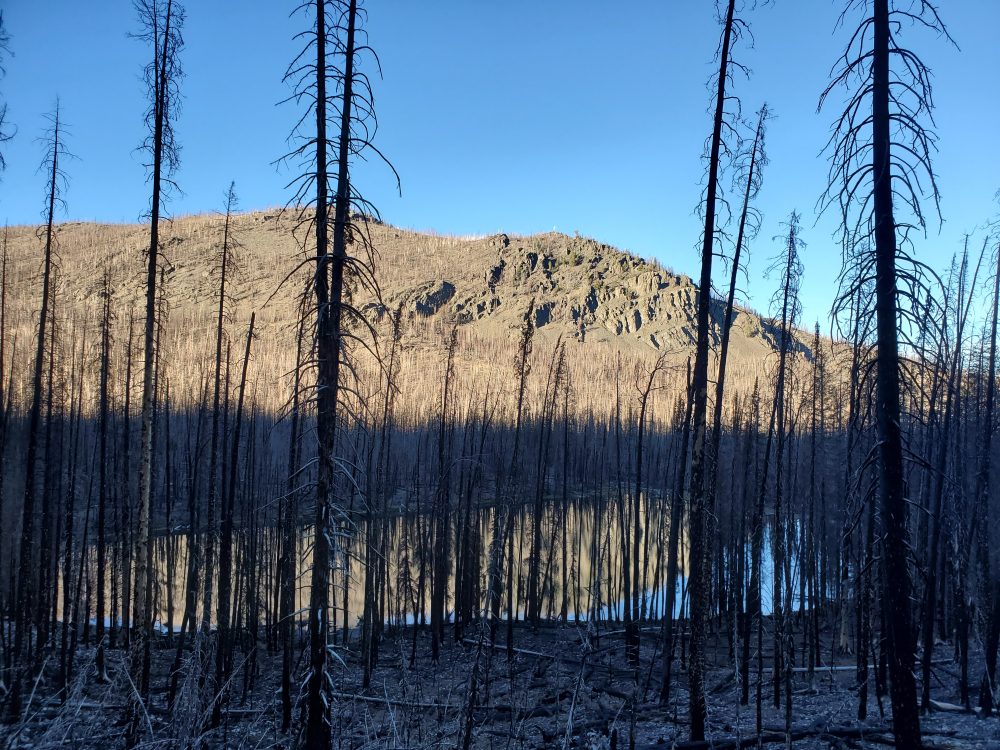
That year, we’d watched it from the back patio that August day. One hundred foot long tongues of fire, spontaneous airborne explosions of pyrolytic gases, could be seen long into the night, hundreds of feet above the crowns of the burning trees. What it left behind was only bare mineral soil and blackened trunks of charcoaled, branchless ghosts of trees.
I knew the fence had to be history. Heat like that can melt clips, uproot steel posts and evaporate wooden ones. Even the barb wire can get brittle and snap under any stress like the creep of winter snowpack, a falling tree, or the bump of a bulging bull elk distracted by the sound of a rival male proudly strutting through the ghost forest on a resplendent autumn day.
And as our trail finally reached the fence, we saw that indeed, much of it no longer met Webster’s definition.
Charred, blackened and now rusting wire lay on the ground. Most of the steel posts remained still upright, although many were flat where the thin topsoil had literally burned off. Some were bent, likely by the extreme heat. No sign of the wooden line posts, however. A perfectly round hole could be found every now and then where the soil hadn’t shifted, blown or washed away, as if someone simply made off with the wood.
It would take some work to put back up. We fixed what we could with the fencing tools that we carried, but needed to replace materials lost in the fire.
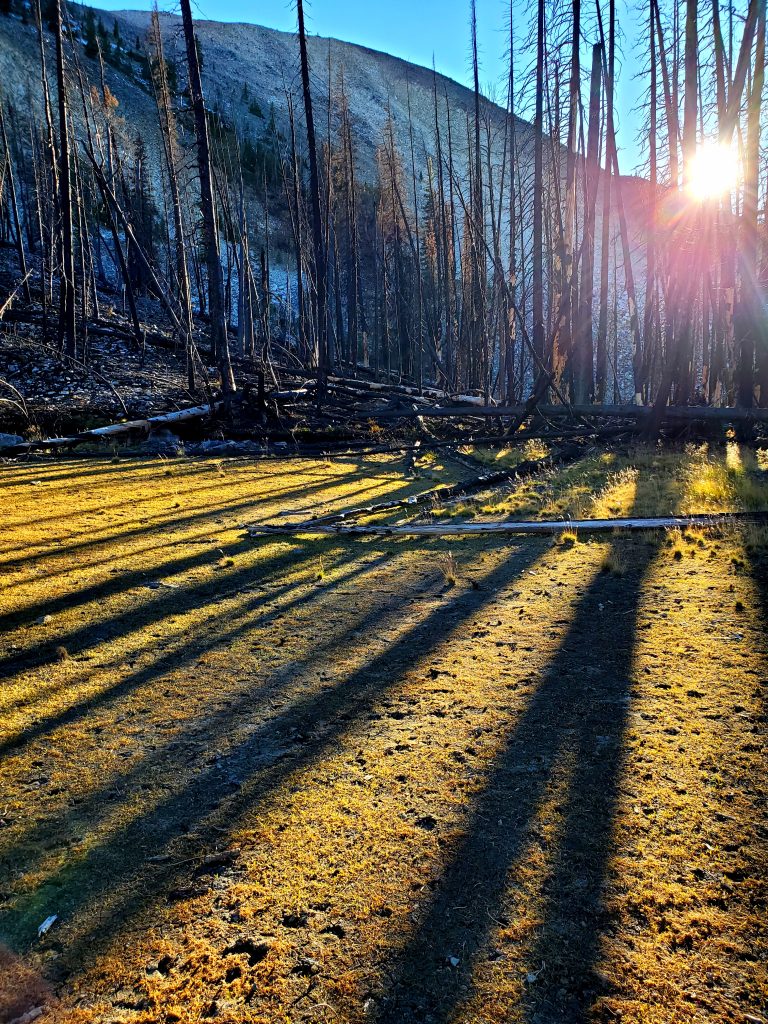
On the way out, we found that the exposed mineral soil unveiled another sort of tumult in the history of Hat Creek. It was quite the opposite of flaming hell-fire.
I stopped on the trail out. “Do you see that rock, Sam and Jess?”
“What rock?”
“All of it. It’s all round, and granitic. But just ahead of us, just 10 feet in front of where we’re standing, it’s all jagged iron-brown volcanics–basalts and andesites.”
“OK…so?,” Sam remarked quizically.
“This is the end of ice. Glacial ice.” With most of the trees skeletal back upstream from us now, in the late afternoon sunlight, it was easy to see the hanging and u-shaped textbook glacial nature of the Valley we descended. Even a non-imaginative sort could easily fill the basin above us with ice. And pretty readily follow the flowing path of the Valley glacial tongue– that ended right here, depositing its burden of rocks where we stood as it melted.
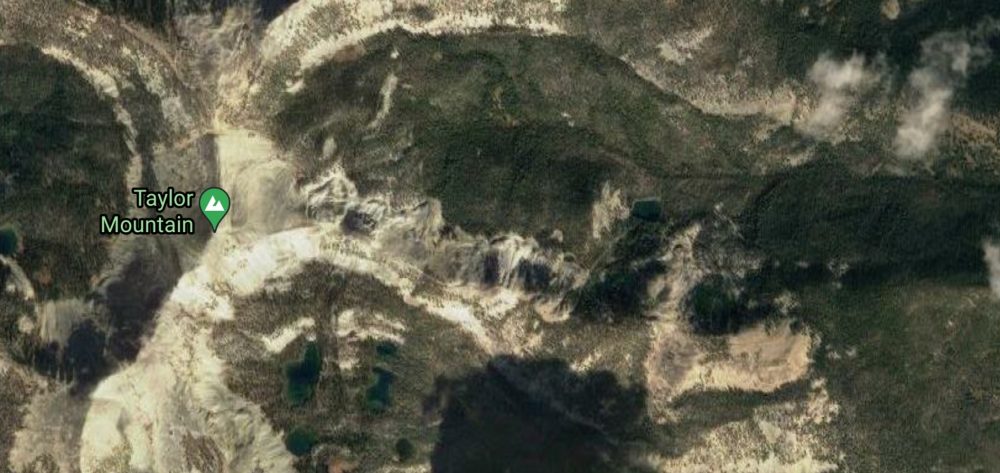
They were rocks of solid granite that make up the bulk of Idaho, and Taylor Mountain itself. As If living, the glacier hand-delivered these boulders, stones in its bosom until it met warm summers at the lower elevations where we now stood. And like Frosty leaving lumps of coal, it melted here, covering the volcanic burdens that shaped the lower country with rocks from above.
“This was the end of the ice. And above us, in the upper Valley, it was perhaps a thousand feet thick.”
As we stood there, now facing back up the canyon, a late afternoon cool mountain-air breeze filled our nostrils. I imagined it to be that cool refrigerator air I had felt years ago when climbing along and traversing glaciers in the North. Closing my eyes,in my mind’s eye, the vision becomes real. I feel the cold, hear the meltwaters roaring by of the North Fork today, and I am standing by the massive gray-blue terminus of a tongue of glacial ice.
It’s a solid mantle of ice. A sheet. Impenetrable. Devoid of life.
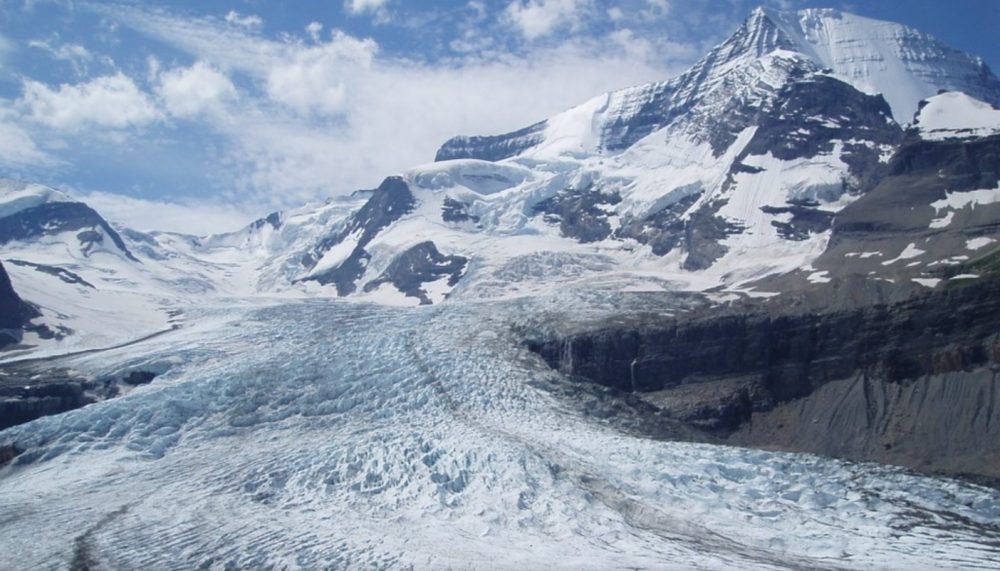
Opening my eyes, I realize now that we’ve sort of come full circle to the opposite effect of temperature extreme. There’s plants along the creek, but by the action of forest fire, again, upper Hat Creek has had the force of nature push the reset button.
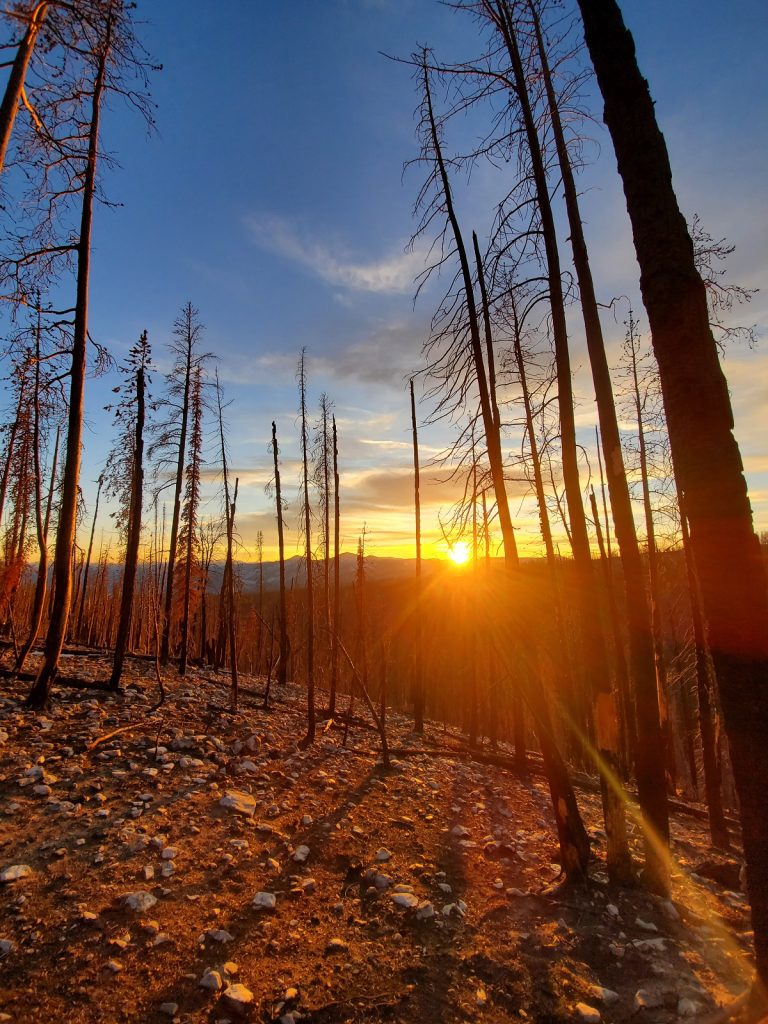
Devoid of life. Again.
I am humbled. When I think if our meager attempts to change landscapes, the fact of the matter is that nature will always have the final say.
Happy Trails
Glenn
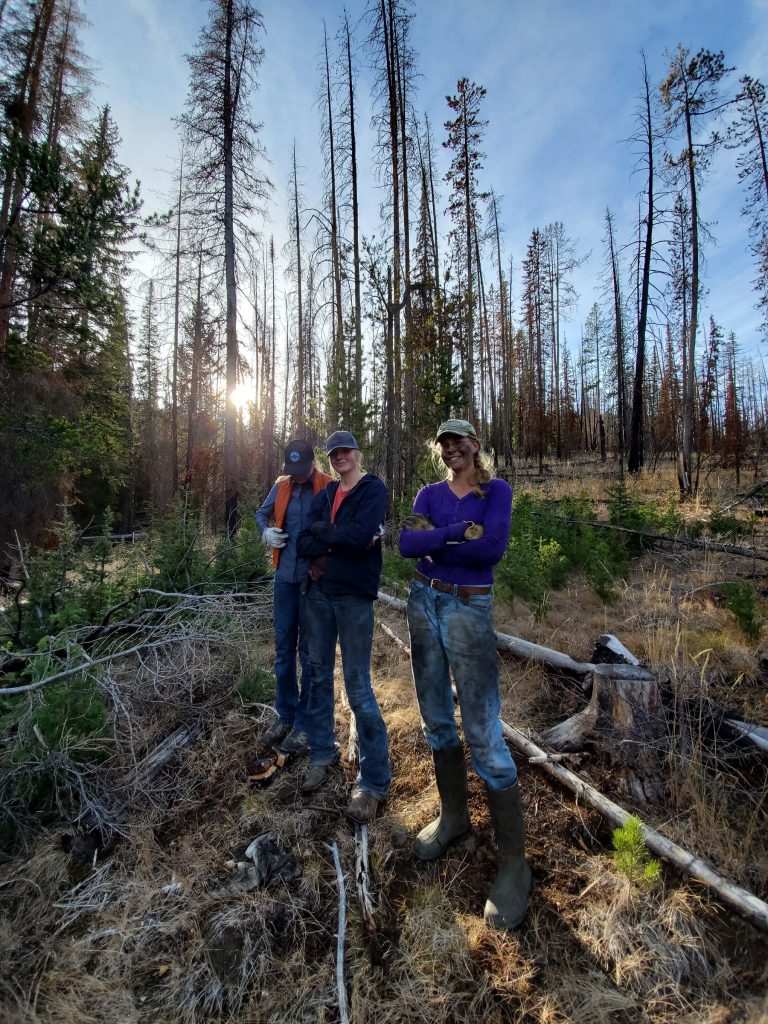



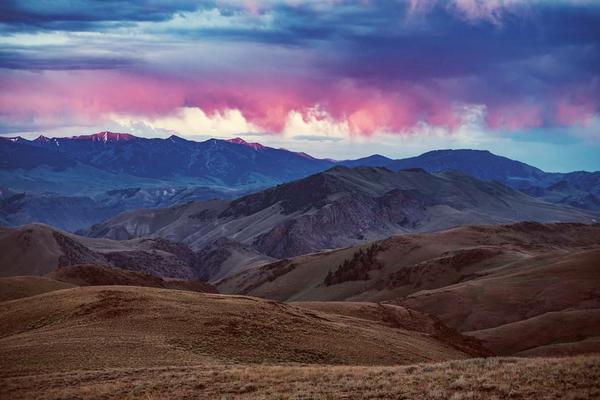

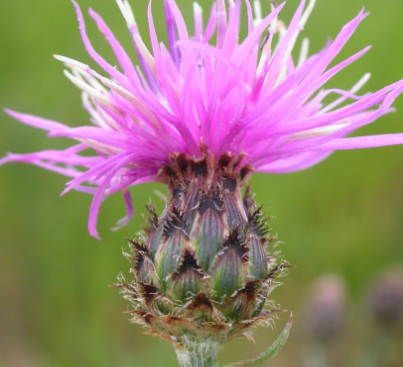

jeff zaremsky
I remember cross country skiing with Glenn – fun times. In heaven I think snow will be warm.
In a recent sermon I mentioned the ranch & used one of those barren fire charred pictures, & a few others from the ranch that were in a previous Glenn story. Here is the link for that sermon:
https://www.shalomadventure.com/torah/drasha/4178-sun-of-righteousness-and-the-fate-of-the-wicked
Caryl Elzinga
Jeff
I really hate to say this, with you living and loving life in Florida, but, in heaven, my friend, snow will still be cold.
That is what makes it so invigorating! That breath of bracing air–hands that feel the chill of icy gloves–that wake up feeling of snow going down your neck when you hit a snow-clad fir tree. Yes!
Thanks for the sermon! I will check these out! Unfortunately most of my listening time is while I’m driving and I’m going to have a real hard time looking at those pictures while negotiating turns on the icy Salmon River Road (NOT!!!!).
Great to hear from you, my friend!
-Glenn
Deb Olsen
As I read this story I thought of the Colorado fire that decimated the land because of the winds blowing so hard. Yes Mother Nature has the final word for sure. Your knowledge in your land is immeasurable and I’m always amazed of how much you understand.
Caryl Elzinga
So Deb, I feel like you’re so right about nature. But it is on us to pay attention to ‘Mother’ and learn…so much of the wisdom that nature has is lost to an agriculture gone industrial. Thank God nature is a patient teacher. Sometimes it takes years to get those lessons, but they are so worth it.
On those fires–I can’t help but think that if we had taken care of these forests, rangelands over the past 100 years, we would have seen far less catastrophe in their effects. Fire could have been a tool, a partner in the conservation and regeneration of our lands, but now it has become a fierce contender–and it now plays for keeps. The genie is out of the bottle now, with our lack of stewardship in our big open lands, and I’m not exactly sure how we’re going to get it back in.
-Glenn